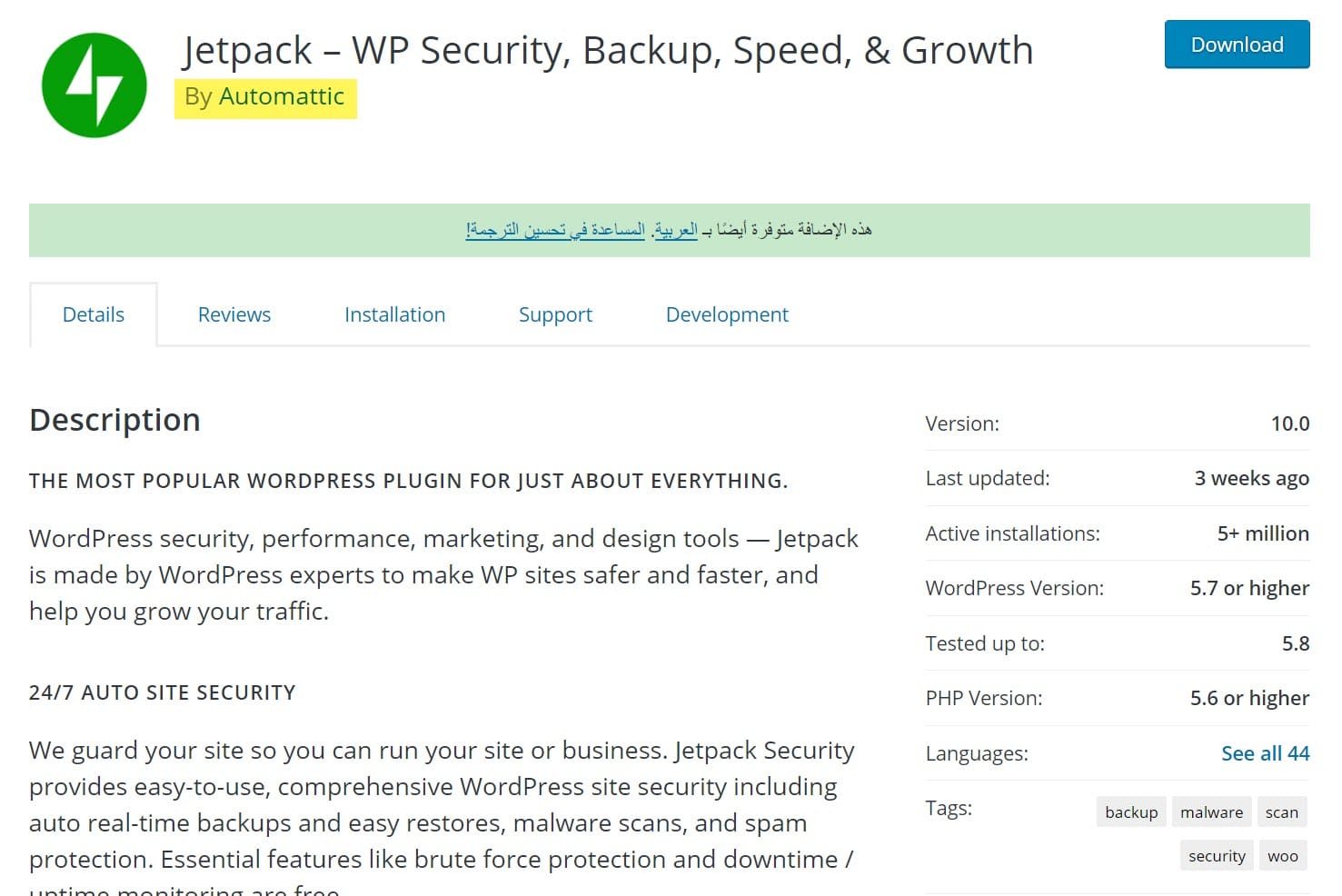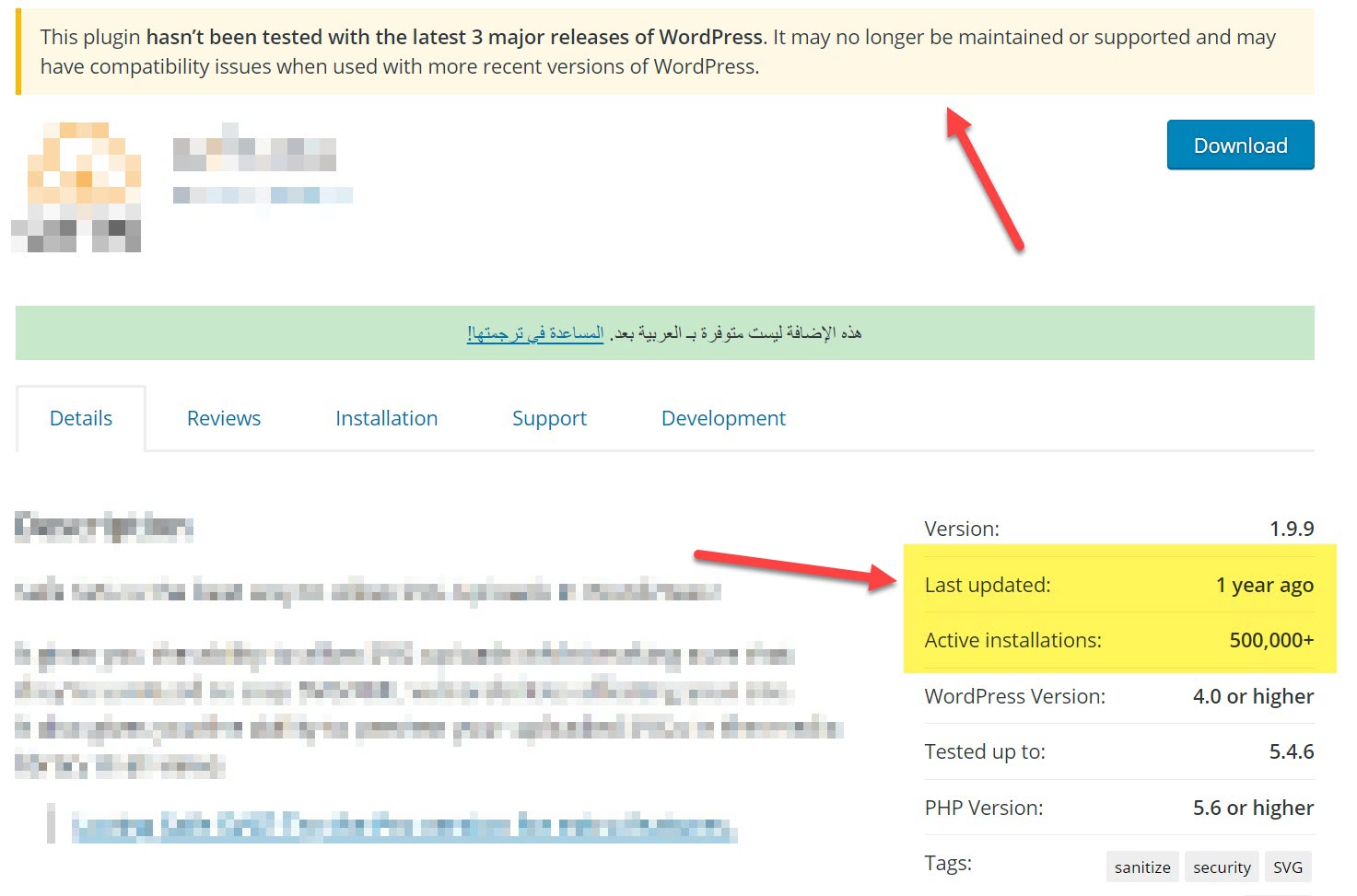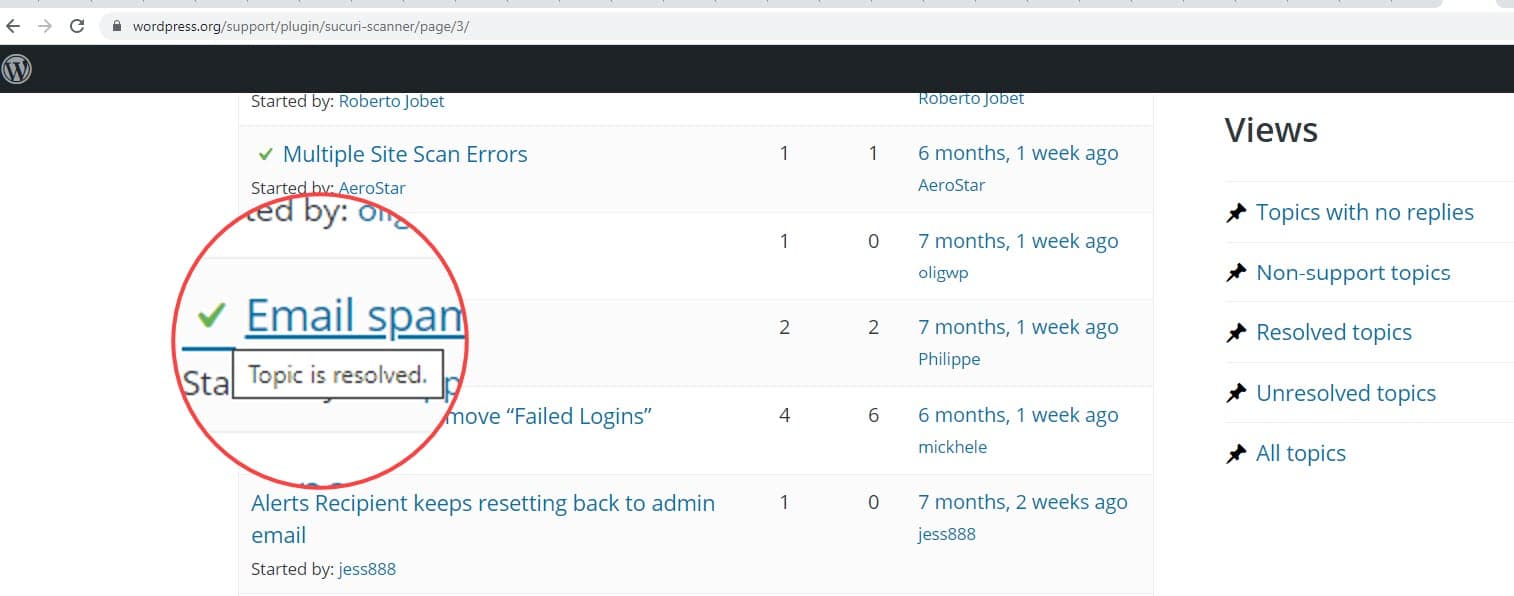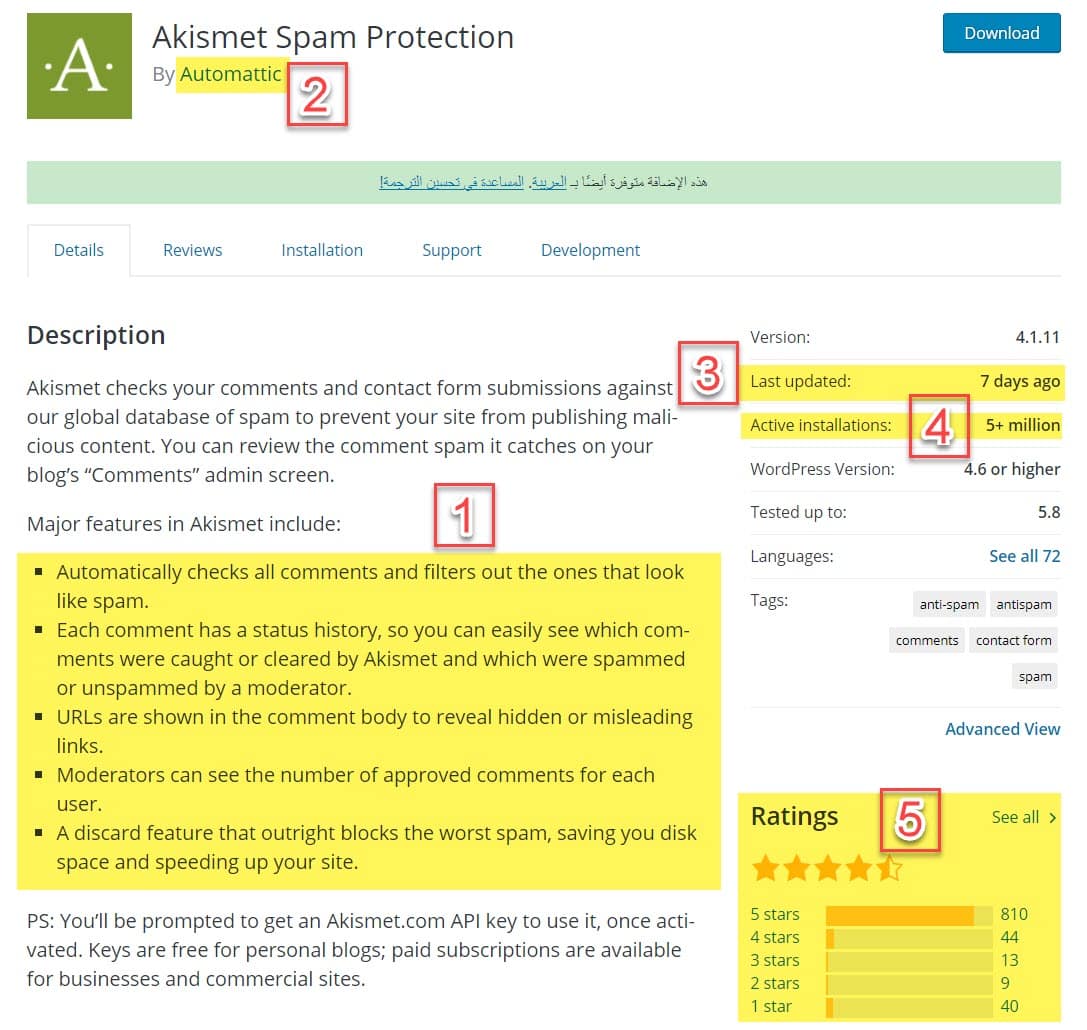While you are working on developing your WordPress website, you will find a lot of missing functions on, and you will find that there are several ready-made plugins that help you complete this task in one way or another instead of spending long hours with a programmer to develop the required features.
You’ll find many plugins you’ve never heard of doing a great job in improving the performance and functionality of your website, improving your marketing efforts, or increasing security.
There are many WordPress plugins, both free and paid, and the abundance of these was supposed to be a great benefit for owners of WordPress websites. However, in many cases the exact opposite occurs in a way that the decision to select the appropriate plugin may become confusing for website owners. You may find 10 or more available plugins, each of them can do the function you are looking for; at that time you ask yourself: Which of them is the right one for my website?
There are many plugins one can come across while searching for “WordPress Plugins” with really great outcomes. But will they be useful to you, or will they harm your website?
Do too many plugins slow down your website? Can these plugins conflict with each other? Do you need a programming background to test the target plugin code?
Many of the questions that come to your mind will be answered during this article. We will show you the right mindset and mechanism through which you can choose the most important plugins to your website even without recommending some specific plugins.
Why WordPress plugins?
one question may come across your mind: What is the point of using WordPress plugins if my website was simple with a few basic pages showing some services or products or static non-updatable content?
What good are plugins if I don’t want a lot of advanced customization in my website, and I’m satisfied with how it looks and performs today?
The short answer to this question is: Yes, on some basic websites you may not need many plugins, but that does not make you lose sight of some important plugins that run in the background, such as extensions that prevent spam, prevent your website from DDOS attacks, improve your website speed and file compression, or help you optimize your website for search engines, or other plugins that run in the background without being visible to the user.
You also need to look further if you need to expand the activity of your current website and add more features to users, as when you need to add a selling and payment processing system within your website, WordPress plugins undoubtedly save you a lot of time.
Thus, as long as you are using WordPress, you cannot ignore how much you need to use plugins most of the time to do a lot of tasks.
A ready-made plugin or special programming?
Some programmers believe that plugins and templates developed specifically for you will be more suitable for the needs of your website in terms of supervising the entire development process, as well as making sure all components of the website are compatible without conflict between them, and in return they obtain specific customized functions.
We can say that this brings you back to another aspect of website development, which is to think of programming the entire website from scratch. This is completely different from the philosophy of WordPress, which saves you a lot of effort and costs by providing ready-made tools developed by major software companies.
An example of this is the famous WooComemrce plugin that was developed by Automatic to help website owners build their own e-stores and which has more than 5 million users so far. You can install it to build your website with one click instead of building code from scratch. As the saying goes, “Start where the others left off.”
In return, you will get continuous technical support from the software development house which boasts professional programmers, with the ability to continuously update the plugin, fix all the bugs they encounter, address all security vulnerabilities, and continuously improve their performance.
This option will be easier for you than waiting for software development house support to solve all the problems you have with the plugin.
This does not mean that you do not need to get programmers’ support in many stages of your website operation, but we are discussing here the idea of getting the best solutions while developing your own website.
Look for functionality, not plugins
A common mistake website owners make is that they install plugins based on their reputation and people’s recommendations rather than making sure that they need to use the features provided by the plugin.
Don’t just search for the “Best WordPress plugins” list and then install all the recommended ones hoping that you would use them later on. Rather, make a point of getting a plugin that provides you with the features you only need for your website.
For example, the site owner may need to insert a custom CSS code for their website, so they install the Beaver Builder plugin, which is specialized in creating landing pages (Visual builder) and which contains many features that run in the background that you do not need. Therefore, it does not make sense to rely on this plugin to obtain a small function from among the many features of the plugin.
You will find many plugins that provide you with the ability to add CSS code. But keep in mind that your goal is not to get a plugin, but rather to get a feature (insert CSS code on your website), and therefore you are looking at the plugin through this perspective.
Check the plugin first
Before installing a plugin on your website, it is important to make sure that the plugin is developed professionally and that it is reliable, by examining it in general from several aspects to make sure it is the best solution for you.
We can say that the following instructions help you identify the quality of the plugin without having to check its code, and without any programming background.
1- Software Development House
Getting to know the company or software team behind the plugin is one of the factors that gives you initial confidence in the professionalism of the code used. If the team developing the plugin is reputable, then they have certainly built it with the best programming practices.
For example, the following plugin (Jetpack) was developed by Automattic.

Automatic is the company that developed WordPress, so you rest assured that the plugin is designed in the best possible way to integrate with WordPress.
You can go to the development team page and see other products and software solutions provided by the team, search for the reputation of the company on the Internet and the quality of other plugins or templates they provided to users to have an initial idea of the code used for the desired plugin.
2- Updating the plugin
The software development house must take care of updating the plugin continuously, not with the aim of adding some complementary features, but with the aim of solving the problems facing users, addressing security holes and improving the code used in the plugin.
WordPress is constantly updated, and therefore you must make sure that the plugin is compatible with system updates.
Here’s an example of a plugin that we don’t recommend; although it was installed 500,000 times, it hasn’t been updated in a year.

You will find that WordPress will show you a warning message about using this plugin.
(This plugin hasn’t been tested with the latest 3 major releases of WordPress. It may no longer be maintained or supported and may have compatibility issues when used with more recent versions of WordPress.)
Therefore, it is important to ensure that the plugin is constantly updated to fill the gaps and security threats to which it has been exposed, as well as fix all the bugs that website owners faced, and ensure that the plugin is compatible with the updated WordPress.
You need to make sure that the plugin is up to date by determining when it was last updated, what versions of the plugin were released, and what updates were added to each update.
3- User experiences
Many users tell their stories, whether good or bad, with the plugin in different groups on the web.
Don’t heed short reviews like (this plugin is too great) or (this plugin is really bad), that do not explain why they actually rate the plugin, such as which features they benefited from or problems they encountered.
There are also some negative reviews placed by users due to misuse or lack of awareness of how the plugin works.
You will find some users recounting their full experience with the plugin, and others telling the most prominent problems they encountered and the extent to which technical support interacted to solve the problem.
Stories like these give you a better idea of the pros and cons of the plugin.
For example, if several users were dissatisfied with the same problem (e.g.: the plugin does not integrate with WooCommerce), then you’ll know that this problem exists in the plugin’s architecture.
You can also search forums and groups of WordPress websites’ owners and read some reviews that give you a better idea of the plugin’s performance.
4- Technical support
You need to ensure the quality of technical support provided by the owner of the plugin by first identifying how the software development house solves the problems that website owners encounter first through updates, and then their response to users’ questions about the plugin.
You can go to the technical support forum of the plugin and see the number of topics that have been resolved (Topic is resolved)

Also, for complex plugins that have many features, you need to make sure that the software development house has provided documentation that explains how to use all the features provided in the plugin.
For paid plugins that provide live technical support (through interactive chats or through email), it’s also important to make sure that the technical support staff is helpful in solving all your problems.
5- Average rating for the plugin
Through WordPress.org or the store where you got the plugin, you can view user reviews of the plugin based on their experiences with it in general.
For example, the following plugin has a rating of 4.7 out of 5 stars based on 3,729 reviews.

This gives an overall impression that most users trust the plugin.
6- Number of downloads
This criterion is not always reliable, as there are some plugins that have a low number of downloads and are not very popular, yet are reliable. Conversely, there are plugins that are very popular, but they are not the best solution for your website.
The plugin may get a large number of downloads, but it may have a security hole or background problems that affect the performance of the website and non-technical users do not pay attention to it. Or support for the plugin may stop after a while by the software development house due, for example, to the lack of financial return from the plugin.
It may also be a less popular plugin that offers very limited features to a small number of users, and is yet developed in a better way.
But, in general, the popular plugins that have received a large number of downloads have been subjected to many experiments on many websites and their performance has been properly tested. This way you are not the first to measure the performance of the plugin.
As you can see in the following example of the popular (Contact Form 7) plugin that has been downloaded by more than 5 million users. This means that it has been tested by many different websites.
It is worth noting that this same example of the aforementioned plugin (Contact form 7) has been exposed to a serious security vulnerability that allows hackers to upload malicious scripts, and all websites that use the plugin have been affected. This bug was discovered in version 5.3.1 and the plugin was urgently updated to fix this serious bug.

This does not mean that the mentioned plugin is notorious or poorly developed, but that absolutely every website is vulnerable to hacking, even those of global, government and financial institutions, with billions of dollars spent annually on cybersecurity.
But what we mean is that you shouldn’t rely on the number of downloads only as an indicator to measure the quality of the plugin. You shouldn’t even depend on one of the factors we mentioned earlier, while neglecting the rest of them. Rather try to combine these factors together as you evaluate the quality of the plugin and the extent of its relevance to your website.
These general criteria help you decide which plugin is right for you, be it a free plugin that you download and install directly from WordPress.org or a paid one that you buy from a software house, online retailers (such as CodeCanyon) or whatever the source of the plugin is.
These are the most popular criteria through which you can determine the quality of the required plugin, and you may specify other criteria for paid plugins, such as the price, comparison of features of the plugin with free alternatives, using the plugin during the trial period before purchasing it, and enlisting a professional developer – if you have a higher budget – to fully test the plugin code.
In general, these general criteria help you identify the plugin that best suits your website needs. In the following paragraph, we examine a practical example of installing a new plugin that accommodates most of the above mentioned criteria.
Hands-on example to accommodate all previous criteria
We will now examine a simple case study in an attempt to choose a reliable plugin to prevent spam on your website. We will check out the Akismet plugin that many website owners recommend.
We will see if this plugin is the best solution for you by applying the previous tips. First, we’ll go to the plugin page on WordPress.org to see some basic criteria as follows:

- You will find in the features of the plugin that it prevents spam comments by automatically identifying them as spam messages, and allows the website administrator to control these comments. This is an important feature for every website owner.
- The software house of the plugin is Automattic, the reputable and trusted company that supports the WordPress system itself. So, the plugin development team is trustworthy.
- The last time the plugin was updated was only 7 days ago. In addition, when we looked at the date of development (Changelog), we found that the first version of the plugin (2.2.4) was released in June 2009 and that several updates were released to it almost periodically. This means that developers of the plugin are keen on updating it all the time.
- The plugin is used by more than 5 million websites so far (+5 Million active installations), which means that it is popular and trusted by a large number of users from different websites who have tried it and ensured its efficient performance.
- The plugin received a rating of (4.7/5.0) based on 916 reviews. Even though the number of reviewers was small, it gives you confidence in general.
It is worth noting that the plugin offers a free version for bloggers for personal use, and a paid one for business owners and commercial websites.
You can examine the plugin in depth by reading user experiences, features they liked and problems they encountered, tech support response to solve those problems, looking at alternatives to the plugin, as well as paid features for the cost benefit if you decide to get the paid version.
You can apply these steps if you wish to get any free or paid plugin. And certainly, it is not necessary that such a plugin get the same large numbers of downloads and reviews. But you get an overall impression of the quality of the plugin by comparing these features to each other.
Check the compatibility of plugins before activation
After selecting the required plugin, one of the important things you should do before installing the plugin is to make sure it does not interfere with the rest of the website components, because this interference may lead to the failure of some of the website functions and may cause a fatal error at times.
The easiest way to ensure the compatibility of the plugin is to examine all its features and compare it with the other installed plugins or the website template. Then make sure that there is no conflict between these features and the current features on your website. Only then you can install the plugin on a staging site to ensure that the plugin will not cause any problems while working.
Of course, it is important to choose a reliable plugin from the get-go, as we explained, and it’s okay to try more than one plugin until you reach the best solution.
Do plugins mean the end of programmers?
Now, a question will come to your mind that since plugins perform all the functions required in WordPress websites through a control panel dedicated to non-technical users, why should we hire a WordPress programmer, or hire a software company as long as the website is fully managed with a custom CMS, ready-made templates and plugins?
I will give you a small example before answering this question about the mechanism of assembling desktop computers (PC). These consist of a processor, random access memory (RAM), hard disk, motherboard, graphics card, and other well-known computer components.
These components are all pre-fabricated. However, you need a specialist to analyze the needs of computer owners first. Then you may choose the appropriate components and then make sure that these are integrated with each other, as well as with external components.
This couldn’t be easier with small-size PCs for personal use. However, it’s more complex for companies to deal with large data using multiple operating systems and advanced software. It is even more difficult to use computers to process complex data or to run a network of cloud servers.
The same is true for WordPress. Despite your reliance on previously prepared plugins, you need a specialist to help you determine the optimal solutions for you first, then make these settings optimally, and coordinate all the components of the website in an optimal way that helps you achieve your goal and provide the best experience to the user. The more features a website has, the more complex it becomes, especially when a webmaster deals with a lot of integrations and APIs.
Conclusion
This article was a guide to knowing the right approach for choosing the plugins that suit your website needs regardless of the website type, size, type of plugins you are looking for or the amount of technical expertise you have. The important thing is that you know the steps you’ll need to complete the search.
It may take you a lot of time to research, analyze, make comparisons between the available plugins, then run several tests to ensure their efficiency. And you may use some specialists in some cases. However, this search and analysis are an essential step in building your website and your business model for a long time. Thus, it is necessary to take the first step correctly.



